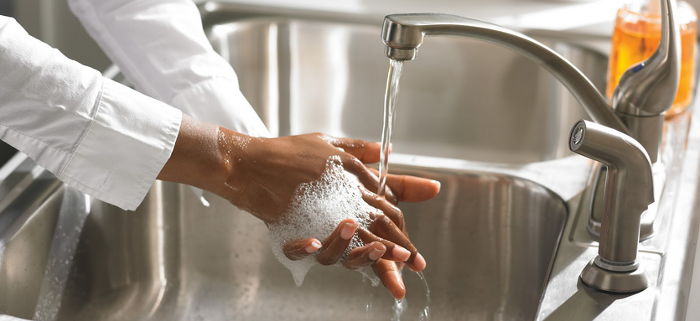Pet Food Safe Handling Tips
Amidst the FDA’s testing assignment of raw pet foods, we’ve heard more questions from customers lately who are concerned about pathogens and pet food safe handling tips. Pathogens can show up in all types of food, but by using safe-handling practices when preparing, serving, and storing your animal’s food, you can minimize risk and keep everyone safe!
Note: Your dog may lick his bowl clean. He may even be an expert at cleaning your dishes! Do NOT mistake your dog’s tongue for an appropriate cleaning product! Also, resist the urge to let your dog lick your face and remember to wash your hands after he licks your fingers.
- Keep It Clean!
Use hot, soapy water to clean food preparation surfaces like countertops and cutting boards. Follow up with a cleaning product that contains bleach, or make your own diluted bleach solution. Clean utensils and bowls with hot, soapy water too or run them through a dishwasher. You can also use a similar diluted bleach solution to clean utensils and bowls; we typically do this once a week. Let everything air-dry to reduce contamination.After handling pet food, always remember to wash your hands with warm, soapy water for at least thirty seconds. Singing “Happy Birthday” to yourself while you wash is an easy way to make sure you’re being thorough.
- Get Those Cats Off the Counter
Easier said than done, we know, but by trying to limit your cat’s exposure to the counter, you can reduce the chances of spreading bacteria from your kitty’s paws to your food preparation surface. Although it may sound like an impossible task, here are some tips for discouraging your cats from jumping on the counter:- Don’t make the counter fun or tasty – never feed your cats on the counter and try to move any objects of interest such as houseplants or flowers.
- Experiment with placing a sheet or two tinfoil on your counters – many cats seem to hate the sound and texture and will avoid walking on those areas.
- For hard-to-break counter habits, consider getting a PetSafe Ssscat Cat Spray Control System, which sprays a shot of harmless compressed air whenever a motion sensor is tripped by your cat.
- Choose stainless steel bowls
Feeding your pet from a stainless steel bowl is great since stainless steel is much less likely to trap bacteria than plastic or ceramic and is easier to wash. We always keep a great selection at the store for both dogs and cats.
- Store Food Properly
- Raw food should be kept in the freezer and then defrosted in the refrigerator until meal time. Stainless steel fridge containers are less common, but a plastic storage container will work just fine – it’s really the feeding bowls that should be stainless steel. We recommend designating a container with a lid specifically for defrosting pet food.
- When finding an ideal container, you should also consider what type of raw food you typically feed. For example, some raw food meat patties can be more than 4 inches in diameter so you’ll want a container that’s wide enough.
- Kibble, dehydrated, free-dried, and air-dried foods should be stored in an airtight container in a cool, dry place. Many of these foods already include packaging with a resealable, interior plastic bag. This works fine, but for foods that don’t include resealable packaging, it’s best to transfer the entire contents to another, air-tight container.
- Canned food should also be also be stored in a cool, dry place.
- Always pay attention to expiration dates and discard any food that is no longer fresh.

